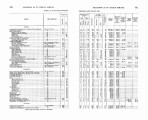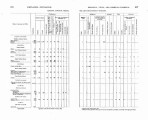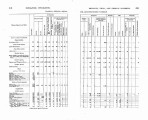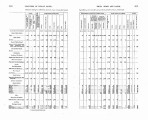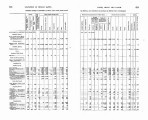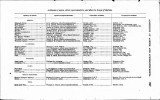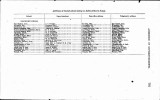| OCR Text |
Show REPORT OF SUPERINTENDENT OF INDIAN SCIXOOLS. , 395 AURICULll3RAL INSTRUCTION IN SCHOOL8. Continuing our previous Pol.icy , we are endeavoring to give agricul- ture the foremost place in ndian school work, and special efforts have been put forth during the year to secure from the instruction the best possible results. It is our aim to see that this instruction shall be eminently practical, having in view the ultimate purpose of equipping the pupils with a, good working knowledge of how to conduct a farm successfully. Teachers in the Indian schools have been directed to. follow the practice of many of our best puhlic schools which have adopted the Ian of having the children, immediately upon their entran.ce at sc % 001, begin the study of seeds, the teachers explaining the different varieties and illustrating the processes of germination. We are also endeavoring to have children, under the direct supervision of the class-room teacher, do theactual work of laying out the garden, preparing the soil, planting, tending the growing plants, and harvest-ing the crop. To this end, supplementin ersonal directions to teachers, circulars have been sent to the ficlf, !&om which the follow-ing are cxtracta: Teachers will find garden work one 01 the best methods in developing English in backward pupils, as the child when working with his hands unconsciously overcome6 timidity and naturally endeavors to imitate all that he sees done. His intellect is kindled curiosity excited, and his mentd facultiea are thus aroused. Teachers should iollaw carefully the instructions laid down in the Oourse of Study in agricul-ture, nature study, and gardening, and correlate these branches with number work (farm accounts), reading, language, and geography. The work in nature study as laid down in the Course of Study should be prose-cuted vigorously. The time is at hand to study the germination of seeds, make hotbeds, forcine beds, start ilantsin boxes to he transplanted in the individual gardens. and to make plans for later work out of doors. - - Select some of the mast common garden seeds, ae the bean, corn, pea, etc., and ~ l a not n cotton in water or in earth in small boxes. and use them as subiects and :llustrations from which to teach nermination of seeds. Have Lwxes prepaml in which' u, ,Lrlt lomart>,< ~el i f l~~s~.arlr,b, agoa, nd other H-18, 60 i l t~ o have an at~undanceof p\ ~nt sw rll gn,w!r for tmrbsplanri!~gi rl the gar-den HOOIL as thc frost is out of the zro~~nd].l ave t lw uuuila Urn(.uh und uw~nrc the earth for them under the direction of the teacher, && the seeds, and ear; for the youn plants. k I o t d s or cold frames should be provided, the children doing as much of the work as thev are able. The nextwork will be in the outdoor garden. Prepamtions may hegin before the time for actual planting. Select and maik off the plot of yd,.t? b< aaaigned for the children's gardens, and subdivide into small plots fort e lnd~vrdual gardens, as directed in the Course of Study. Plant practical things, chieHv veeetables used on the table. with a few flowers if desired. - Let the children plant tEe seeds and care for the beds. Above all else, endeavor to instil into each pupil a pride in his garden and a. feeling of ownemhip-that it belones to him individuallv. In the gaaens a rotation of crGps should be practiced, and the crops selected for this purpose should he such as will give the best yield and command the highest price in the locality. Commence as early in the season as possible, and if a first crop should fail, reseed. During the past year our efforts to have agriculture taught more extensively in the class room have been productive of ood results. .At Chilocco, for instance, class-room teachers instruct t % e pupils in the processes of nature from the germination of the seed until the plant is matured. The instruction IS so arranged as to correlate with the field work, which materially aids the farmer in teaching pupils the practical sideof agriculture. It is our constant aim to have the farmer |






















































































































































































































